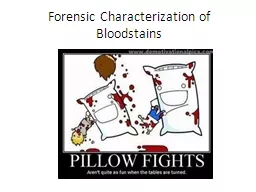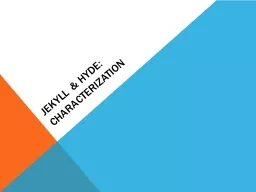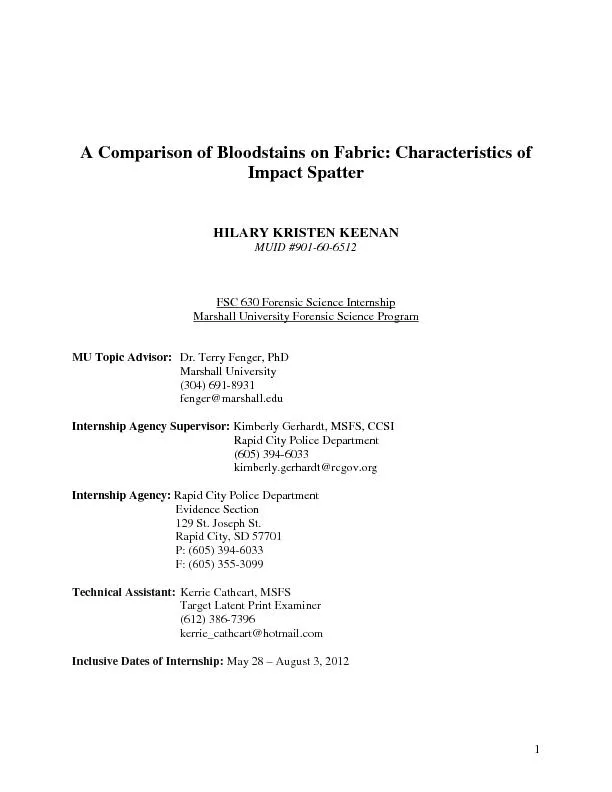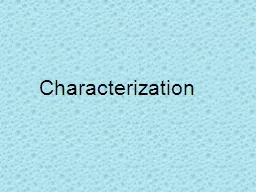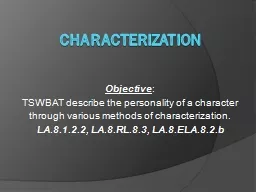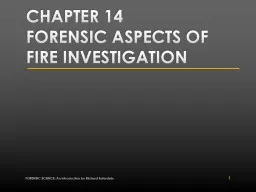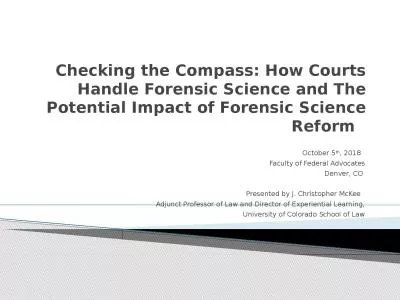PPT-Forensic Characterization of Bloodstains
Author : alida-meadow | Published Date : 2018-09-25
Bloodstain Pattern Analysis Terms Spatter Bloodstains created from the application of force to the area where the blood originated OriginSource The place from
Presentation Embed Code
Download Presentation
Download Presentation The PPT/PDF document "Forensic Characterization of Bloodstains" is the property of its rightful owner. Permission is granted to download and print the materials on this website for personal, non-commercial use only, and to display it on your personal computer provided you do not modify the materials and that you retain all copyright notices contained in the materials. By downloading content from our website, you accept the terms of this agreement.
Forensic Characterization of Bloodstains: Transcript
Download Rules Of Document
"Forensic Characterization of Bloodstains"The content belongs to its owner. You may download and print it for personal use, without modification, and keep all copyright notices. By downloading, you agree to these terms.
Related Documents

